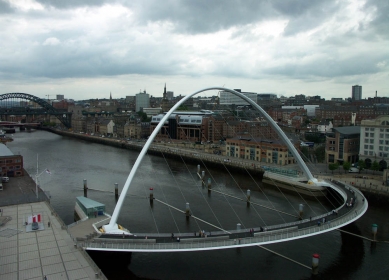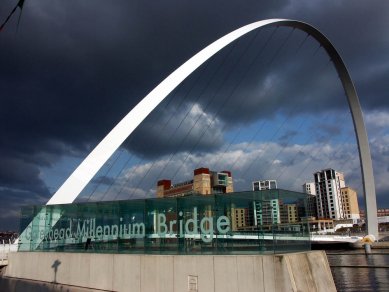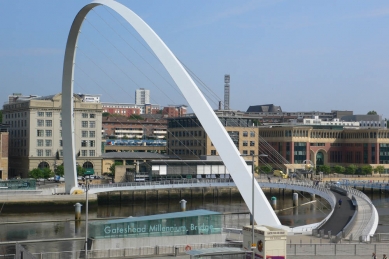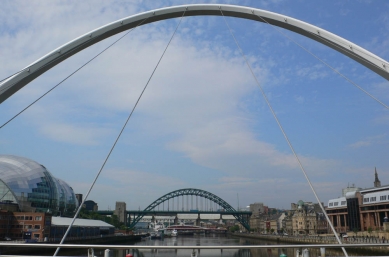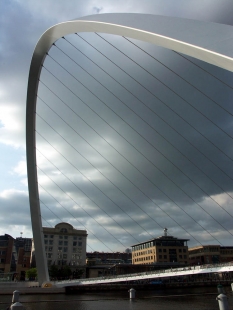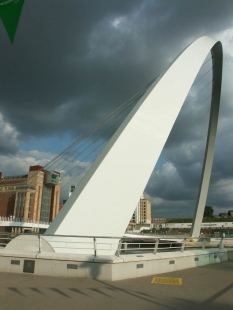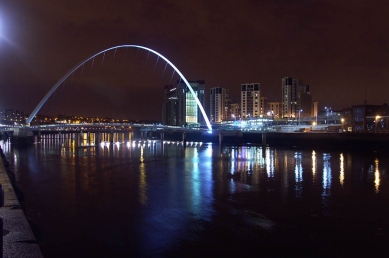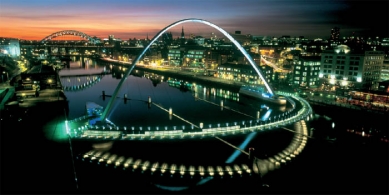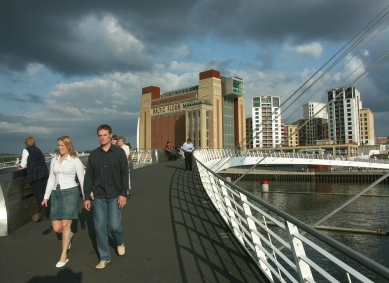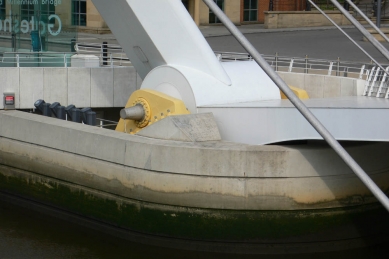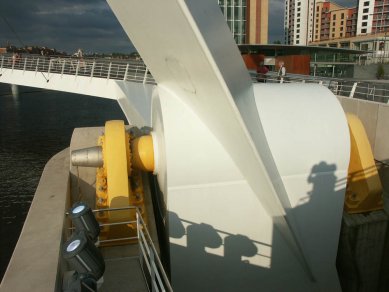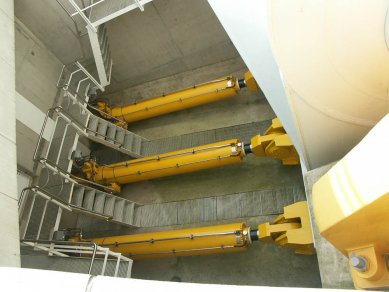
Gateshead Millennium Bridge

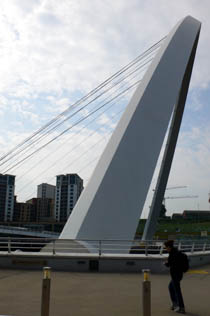 |
The Millennium Bridge resembles the shape of an eye looking toward the sea. The structure, consisting of two arches, appears light and elegant and does not disrupt the character of the waterfront, even though it contains enough steel to manufacture 64 double-decker buses or 16 tanks. The total weight is over 850 tons, and the height in its normal position is 50 m above the river level. The entire bridge was transported along the River Tyne and installed by the largest European crane, the Asian Hercules II. The lighting of the bridge was entrusted to Jonathan Speirs and Associates (JSA), whose task was to illuminate the bridge in a way that causes the least light pollution to the waterfront. During the week it is lit with white light, while on weekends it gradually changes colors.
It was opened to the public on November 20, 2000. The first tilt was witnessed by 36,000 people on the waterfront. On May 7, 2002, it was officially opened in the presence of the British Queen and the Duke of Edinburgh. In 2007, it is expected to appear on a one-pound coin. The Gateshead Millennium Bridge has been awarded many times, with two of the most prestigious awards being the RIBA Stirling Prize 2002 and the RIBA Award 2002.
Cost: £22 million
The English translation is powered by AI tool. Switch to Czech to view the original text source.
0 comments
add comment


